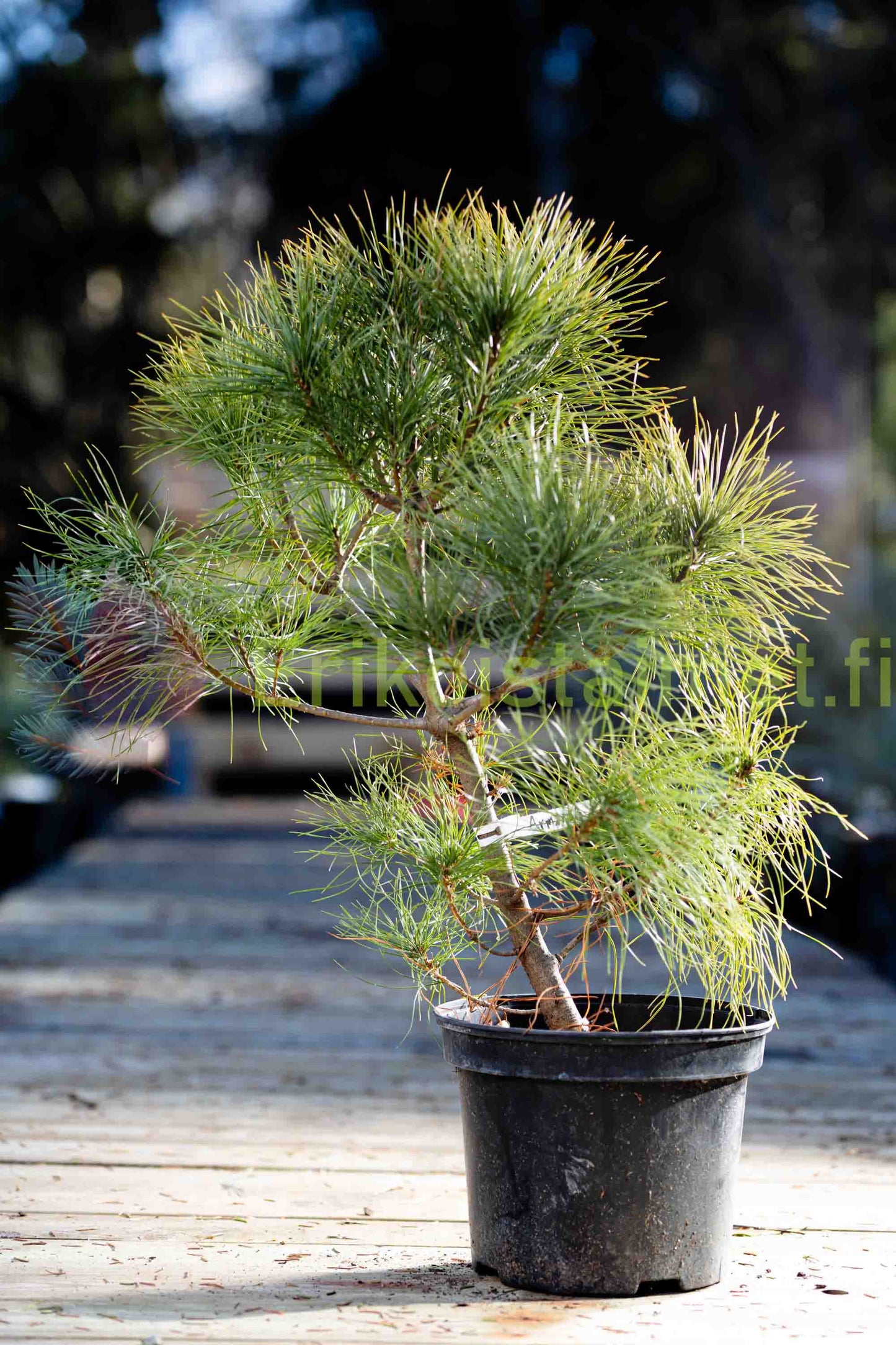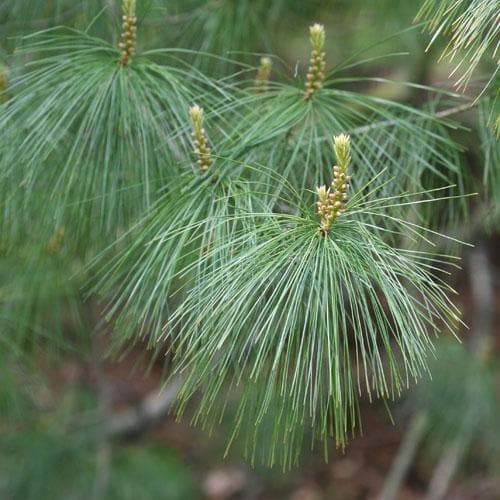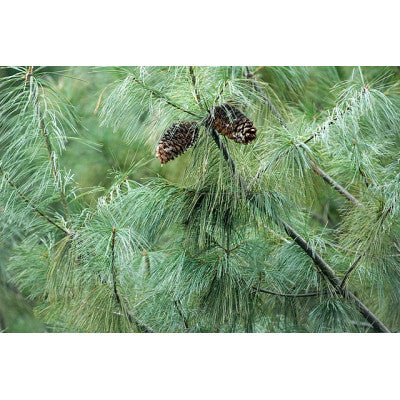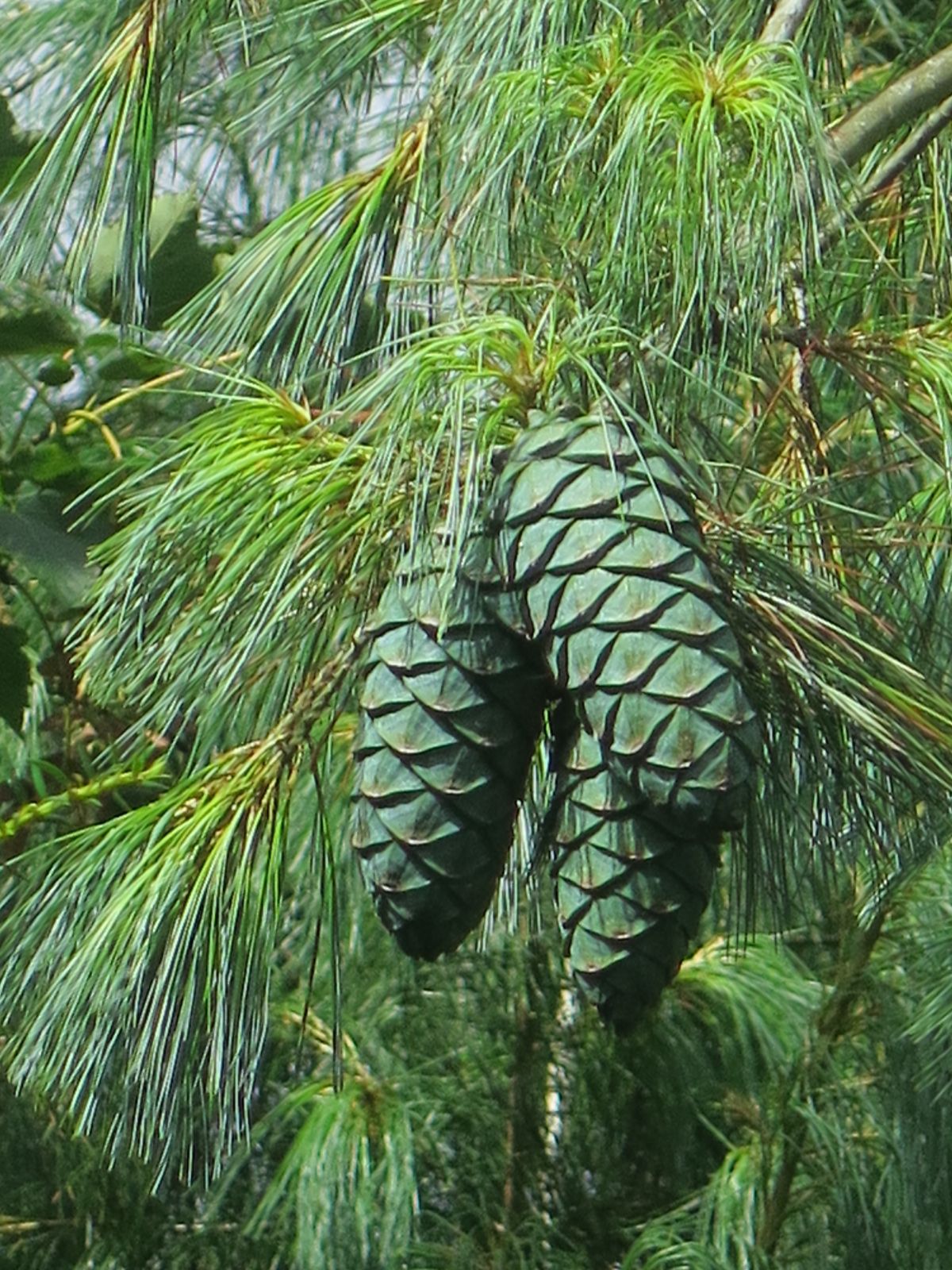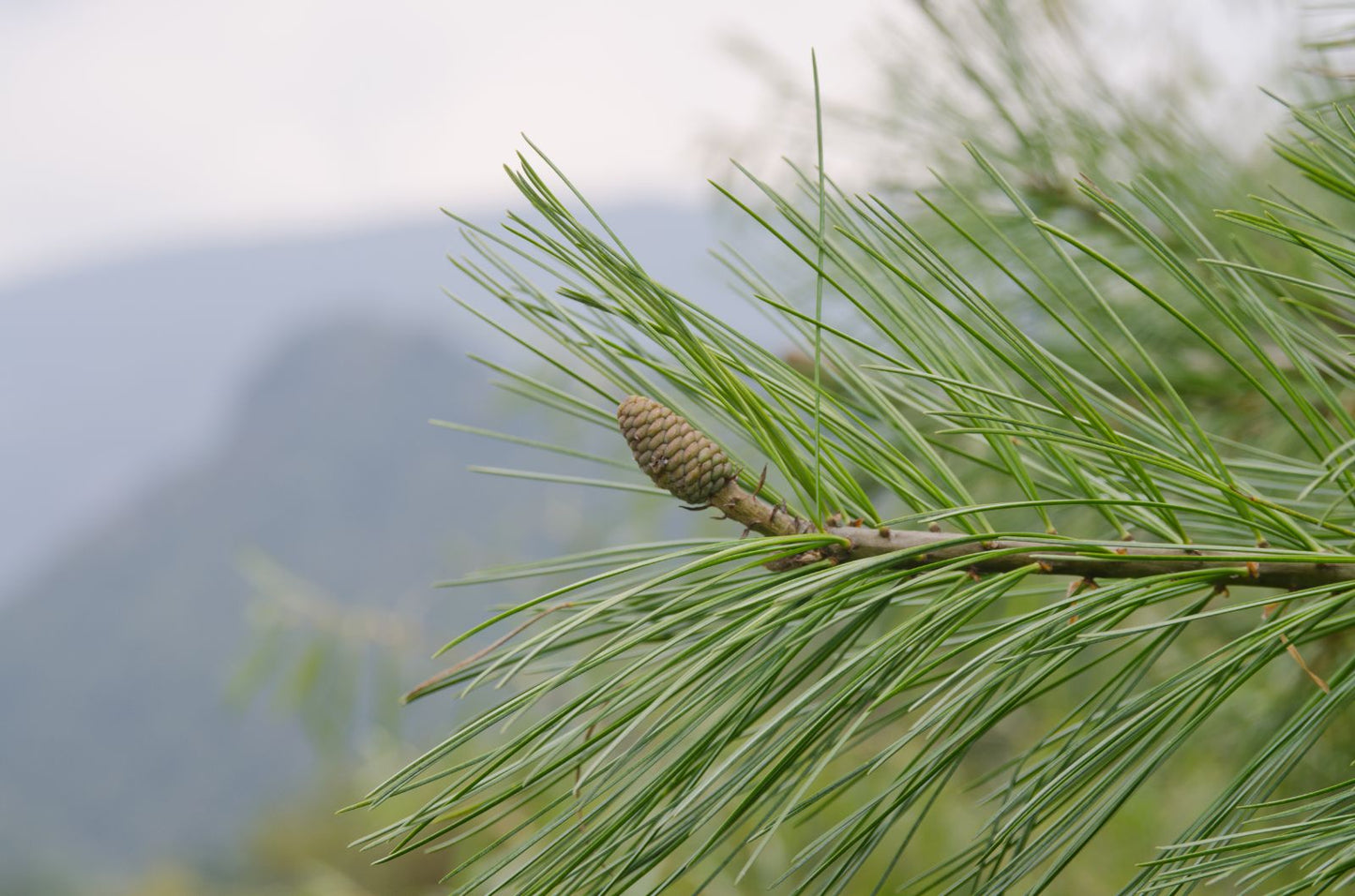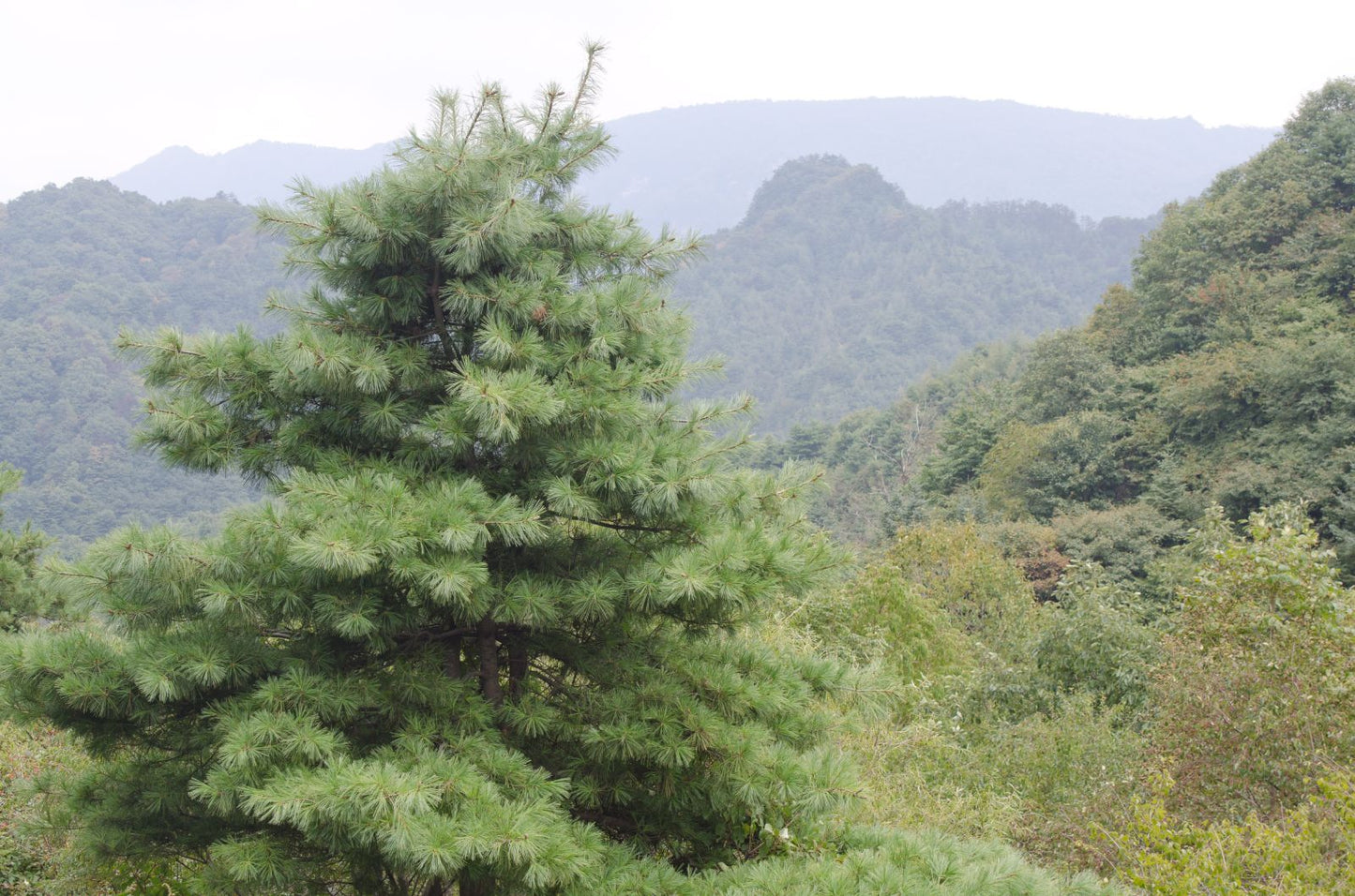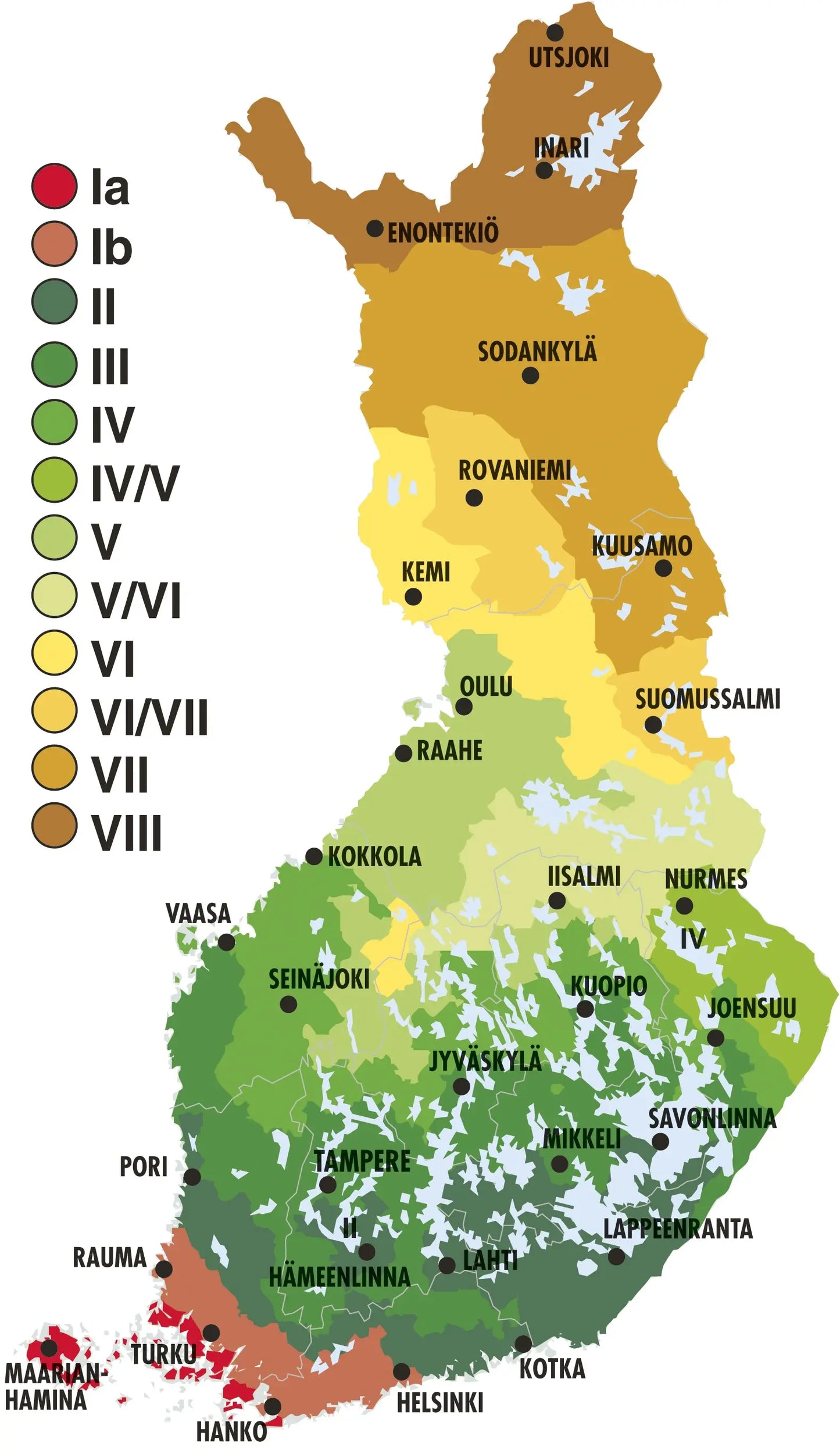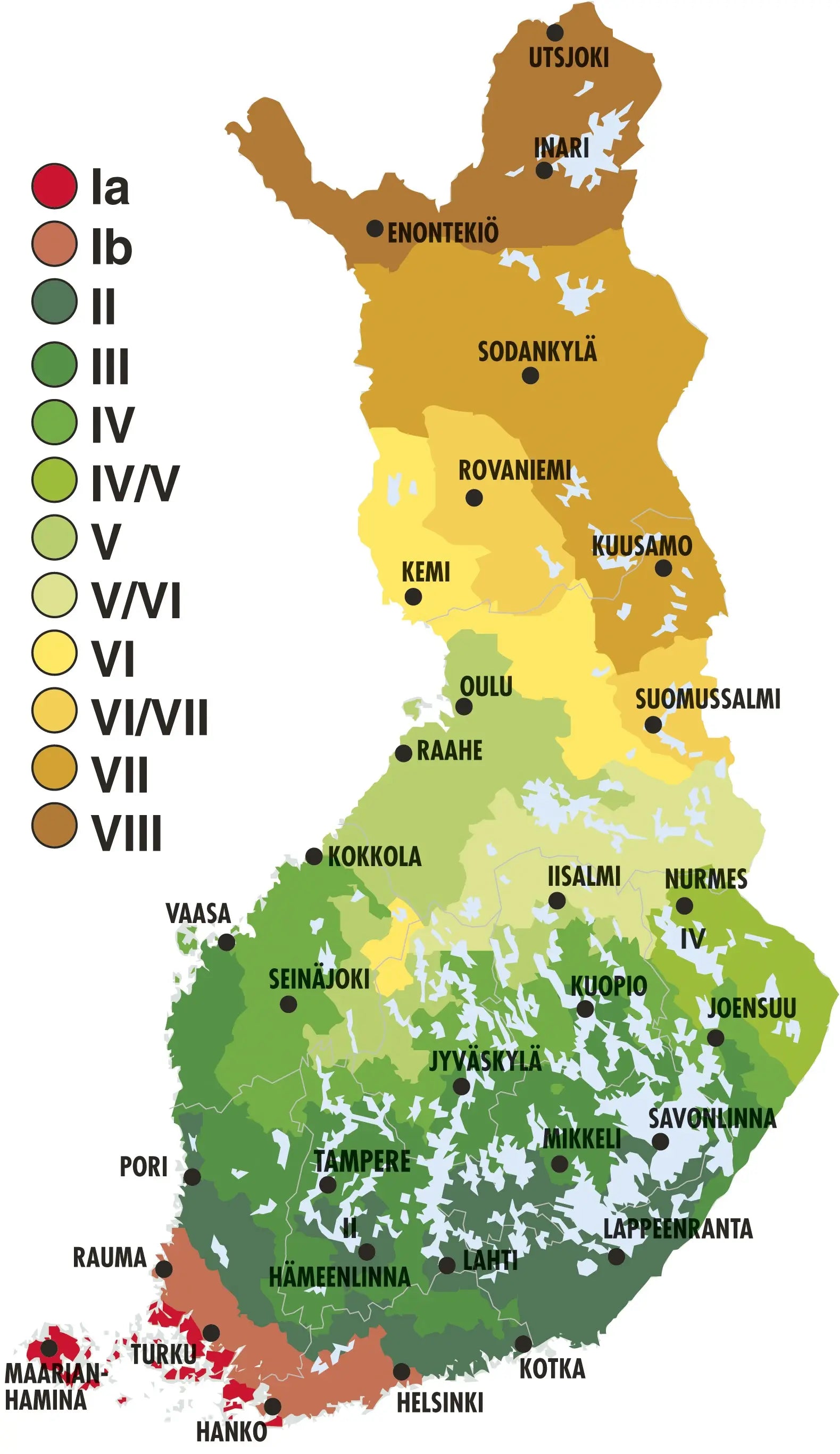Erikoistaimet.fi
Pinus Armandii - Chinese sembra
Pinus Armandii - Chinese sembra
Couldn't load pickup availability




As the name suggests, Chinese sembra, which belongs to the white pines, originates from China. It grows in a wide area in eastern China. In addition, separate populations of the species grow in Taiwan and northern Myanmar. Chinese sembra grows in its natural range in general. at an altitude of approx. 1000–3300 meters in the mountains. In the northern parts of its range, it occurs lower in the mountains and in the southern parts higher. The growing places are often stony and with little soil. Despite its beautiful appearance, the Chinese sembra is not very common as an ornamental tree in the world. In Finland and Sweden, Chinese anemone is rare, mostly only a specialty tried by plant enthusiasts. The species number of the scientific name of the species honors the French missionary Armand David (1826–1900), known as a botanist, who discovered the species new to science in China in 1873.
The growth rate of Chinese sembra is average. The growth rate can be up to approx. 50 cm per year in the older ones in a favorable place in its distribution area. It becomes a straight-trunk tree in a favorable location. In its area of distribution, it can grow approx. 25–35 meters high, but in Finland it remains a tree only a few meters high at best. Under favorable conditions, the tree can grow up to 500 years old. The growth habit is conical when young. Older branches tend to be long, which makes the canopy quite open and asymmetrical. The branches of the tree are sparsely decorated with bushy needle tufts, otherwise the shoots are bare. In this case, the plant looks a bit like e.g. the weeping pine (Pinus wallichiana). The color of the bark is gray - violet gray. As the bark gets older, it thickens, becomes furrowed and peels off in rectangular plates. The bark of the branches is green at first and eventually turns brown. Chinese sembra belongs to five-needle pines. Its decorative pale green, drooping needles are 8–15 cm long and 1–1.5 mm thick. The needles are light green - bluish green. They change every 2-3 years.
The wind-pollinated flowering of Chinese sembra begins in a favorable growing place when the tree is 5–8 years old and it is timed in late spring. The tree is monoecious; the same individual has both pistil and stamen cones, but the plant is not completely self-pollinated. The flowering is quite inconspicuous. The stamens are light green, approx. 1.5-2.5 cm long. The cones are also green. Pollinated queen pines ripen by October-November of the following year. The cones are 8-14 cm long and approx. 6 cm wide. They are conical-cylindrical, green, resinous and initially grow vertically and gradually become hanging. After ripening, they turn brown and open. The seeds are smaller than, for example, Korean sembra (Pinus koraiensis). They are light to dark brown, 10–16 mm long and 6–10 mm in diameter, and usually practically wingless. The seeds have been used as food in China, but now they are suspected of causing a taste disorder and eating them is no longer recommended.
Chinese sembra needs a sunny and sheltered place in Finland. The tree tolerates a variety of soils, even sandy or clay soils. It is important that the growing medium is permeable to water. The plant needs space for its deep root system in its place of growth. Chinese sembra is recommended to be watered regularly at least in the first summer after planting, depending on the season. Due to its small root system during the seedling stage, Chinese sembra does not do well in root competition with weeds or tree stems when young. The plant does not tolerate salt and air pollution. Chinese sembra is considered healthy, its resistance to diseases and pests is good in a favorable location. In Finland, the species is quite winter sensitive, but recently there have already been some promising signs of the species wintering in Finland as well. Chinese sembra needs protection from the spring sun when young, and young seedlings need winter protection. Chinese cembra is also suitable as a Bonsai tree.
- USDA: 6-9
- Sunny
- PH recommendation: 5–7
Ice
